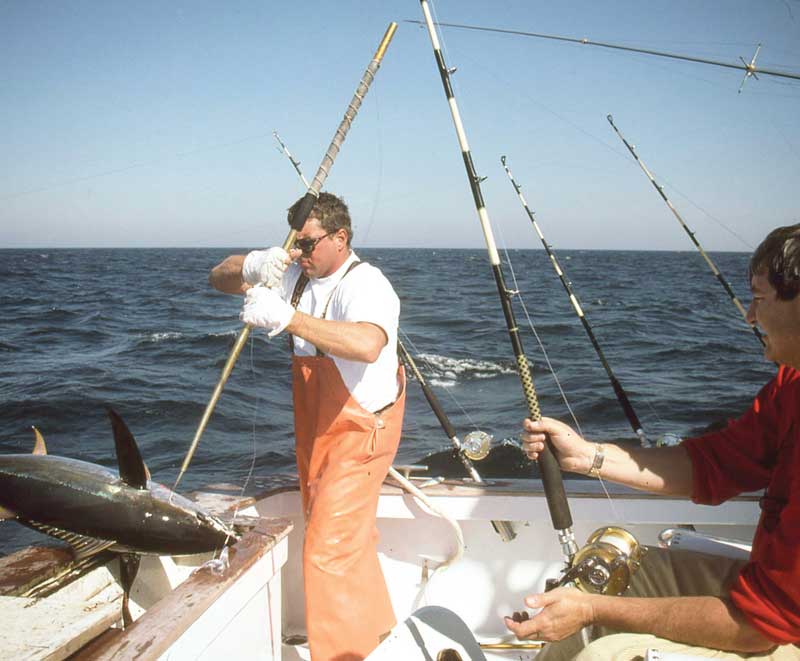June is usually the time for tuna fishing off the DelMarVa Coast, but so far in 2019 everything has come in early, so by the time you read this the tuna may be here. If so, you can still use this guide as I don’t think they will have left the inshore lumps we are going to talk about.

The inshore lumps out of Lewes, DE; Indian River, DE; Ocean City, MD; and Wachapreague, VA, will hold tuna for all of June and into July until the water temperature gets too warm for them. Some may even stick around for a while feeding below the thermocline during the day and rising up at night when the surface water cools a bit.
Bluefins will be the first to arrive, and they can be pretty large. The biggest I have caught on the inshore lumps was an 80-pounder taken on a feather in early June. We had been catching smaller fish on feathers and cedar plugs when this monster jumped all over the feather with a trailing Uncle Josh Pork Rind. Uncle Josh is out of business, but there are plenty of plastic tails that will add movement to your feathers in a similar manner.
I always like to start my tuna trolling trips early in the day. If I don’t see the sunrise over the water, I am running late. The run to the inshore lumps is reasonably short and the early morning sea is usually calm (if it isn’t, you should rethink the trip), so you can make good time.
Unless you have good information as where the fish were last seen, begin at the closest lump to port. Start trolling cedar plugs, feathers, Green Machines, birds, Mold Craft, or whatever lures you happen to like. Tuna are not picky. You do not need bait, just lures.
When working a lump, troll across the depth change going from shallow to deep and back to shallow again. The trolling speed can be from five to seven knots depending on sea conditions and the direction of the current. Calm water may require a faster speed. Working into the current may require a slower speed. The important thing is knowing how your lures are supposed to work and adjusting your speed accordingly.
When trolling for tuna, you want the lures to stay in the water and create a smoke (bubble) trail. Flipping out and tumbling over the wake won’t work. If the lures won’t stay in the water, slow down or use heavier lures.
Keep an eye out for weed lines and color changes. Several years ago, I was on a boat fishing out of Virginia Beach when we came across a color change at the Triple Zeros. Every time we went from the cold water into the warm water, we hooked up six yellowfins; two on the flat lines, two on the outriggers, and one on the center rigger. It didn’t take long to put our three-fish-per-person limit in the boat and head back to the dock.
Once the bluefin depart, the yellowfins will arrive. Trolling will still produce, but sooner or later, chunking will take over.
Most boats will anchor when chunking and set up so the chunks flow from shallow water to deep. This process requires a good deal of anchor rode and a long anchor chain. You will be setting up in 20 to 30 fathoms which is 120 to 180 feet so 1000 feet of rode is not out of the question.
Once on site, the frozen bait must be cut into chunks. Then a hand full at a time is tossed overboard from the stern. The anglers will need to bait 7/0 to 8/0 circle hooks with fresh bait chunks and allow them to flow down with the frozen chunks.
I use 30-pound gear with 50-pound mono line. My leader will be 15 feet of 30-pound Fluorocarbon attached to the running line with an Albright knot. The hook is attached to the leader with a snell or clinch knot.
The idea is to let the bait chunk flow with the chum chunks so the tuna will not hesitate to grab your bait. Most of the time the bait and chum will flow together, but when the wind and current work against you a small weight may be needed to encourage the bait to sink.
When the tuna picks up the bait, allow it to run off some line then engage the reel and you will be hooked up. The rest is up to you.
By Eric Burnley